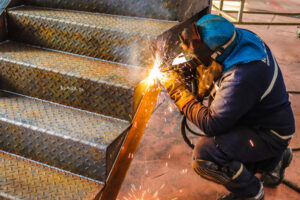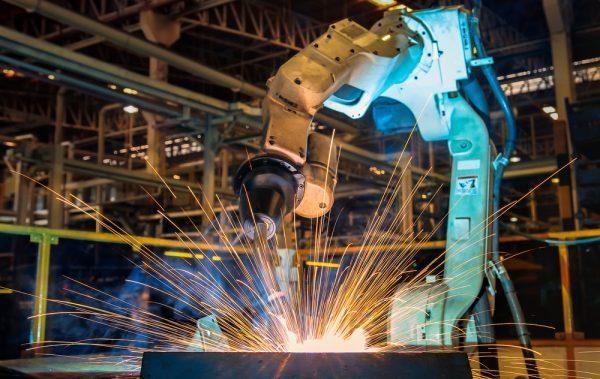The Art and Science of Metal Milling – from Blocks to Brilliance
The world of metal manufacturing is constantly evolving, and metal milling plays a crucial role in transforming raw materials into precise components. The journey of solid blocks of metals alters through a fusion of engineering expertise, innovative processes, and sophisticated machines into brilliant, extremely functional parts. Whether it is for electronics, construction, automotive, or aerospace, custom metal fabrication would not be possible without the flexibility and precision of metal milling.
At Cresco, we acknowledge the importance of integrating both science and the art of milling to provide top-tier sheet metal fabrication and bespoke components for unique industrial needs. This blog will help you understand how metal milling has evolved into a crucial element of modern manufacturing, showcasing the procedures, creative strategies, and technologies behind it.
Understanding metal milling technology
Metal milling is known as a subtractive manufacturing procedure where material is removed from a solid metal workpiece using rotary cutters. These exact machines are assisted by computer numerical control or CNC systems to achieve the correct dimensions and intricate designs. Contrary to conventional fabrication techniques, CNC milling ensures minimal error and repeatability across large production batches.
Key procedures in metal milling include –
- Face milling – for flat surfaces.
- Peripheral milling – for cutting deep cavities and contours.
- Drilling and tapping – For operations like hole-making.
- 3D milling – For intricate geometries often found in custom molds and prototypes.
Over multiple years, machine designs, innovations in tooling, and software have made metal milling faster, more cost-effective, and more accurate. This allows industries to develop everything from structural brackets and surgical instruments with unparalleled precision.
The artistic side – custom metal fabrication
While the science behind metal milling relies on its mechanical precision, its application is also artistic. Custom metal fabrication is where creativity, functionality, and design meet. It helps to create unique metal parts according to the customer’s accurate requirements.
At this stage, designers and engineers collaborate to conceptualize the outcome –
- What material will be used – steel, titanium, and aluminum?
- What surface finish is required – anodized, powder coated, or polished?
- What is the load-bearing and tolerance needs?
Advanced software tools, including CAM/CAD, allow fabrication to simulate the complete milling procedure before any single cut is made. This provides material efficiency and helps prevent faults. Once the design is confirmed, CNC machines bring the vision to life, executing curves, grooves, patterns, and channels with microscopic precision.
Custom fabrication is practically essential for industries like –
- Aerospace (engine parts, precision fittings)
- Automotives (housings, brackets, prototypes)
- Medical devices (surgical tools, implants)
- Architecture (structural components, decorative metalworks)
Sheet metal fabrication – thin, versatile, and strong
Another critical aspect of milling is sheet metal fabrication, which involves transforming and shaping flat metal sheets into complete components. Sheet metal is acknowledged for its flexibility, low weight, and strength, making it perfect for high-performance applications.
Processes usually used in fabricating sheet metal include –
- Cutting – using CNC milling or lasers to form intricate designs.
- Bending – transforming flat sheets into intricate shapes.
- Punching – making slots or holes with high precision.
- Welding and assembly – managing parts to create the outcome.
Milling plays a vital role in refining and sheet metal parts. For example, with a high tolerance for conventional cutting tools, CNC mills help refine edges, machine mounting holes, and smooth out surfaces.
Components made from sheet metal are usually seen in customer electronics, enclosures, heavy machinery, and HVAC systems. Cresco specializes in accurate sheet metal milling, ensuring every part meets both aesthetic and functional demands.
The role of automation in modern milling
The combination of automation within metal milling technology has transformed fabrication workflows. With the help of auto-tool chargers, robotic arms, and AI-enhanced controls, current milling machines can provide 24/7 service with minimal human supervision.

Advantages include –
- Higher production rates
- Consistent quality
- Reduced waste
- Lower operating costs
Automated CNC technique provides real-time monitoring and adaptive machining. It signifies that the tool begins to wear due to metal temperature alteration during cutting, to adjust the feed rate or the spindle speed automatically.
Final thoughts
The venture from metal blocks to brilliant finished parts is a fusion of science, innovation, and craftsmanship. As metal milling techniques continue to evolve, customization and product design will only become stronger.
You can join professionals like Cresco; businesses gain proper access to cutting-edge milling procedures and expert guidance. Metal milling is an unsung hero of contemporary manufacturing.
FAQs
1. What is the difference between metal milling and metal turning?
Suitable for complex shapes, metal milling entails rotating a cutting tool while the workpiece stays steady or moves slightly. Turning is perfect for cylindrical pieces since it turns the workpiece as a single-point tool cut.
2. Why is CNC milling preferred in custom metal fabrication?
CNC milling is ideal for creating unique parts with fine features and strict tolerances because it provides unparalleled precision, repeatability, and efficiency.
3. What metals are best suited for sheet metal fabrication?
Because of their strength, ease of machining, and corrosion resistance, common metals include copper, stainless steel, aluminum, and galvanized steel.
4. How does automation improve the metal milling process?
Automation increases production’s scalability and efficiency by improving speed, uniformity, and safety while lowering operating expenses and human error.


